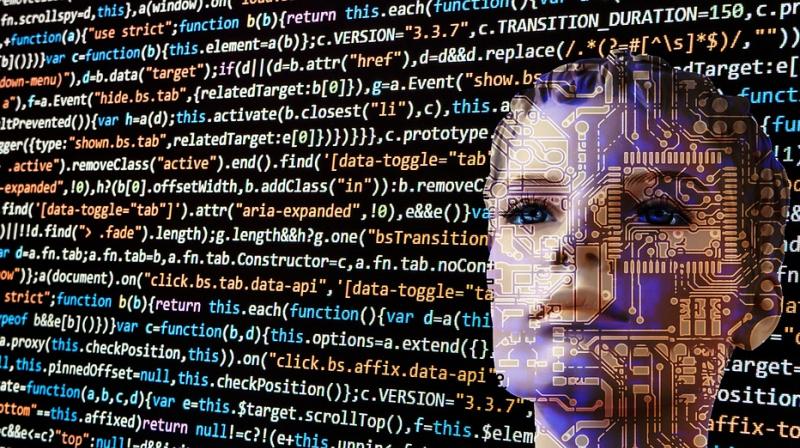Disruptive technologies are transforming the IT landscape

Access to information is vital to the pace of growth of businesses and organizations and the flexibility with which they respond to imperatives. Information technology has made this access easier. While earlier, computers were merely an enabler of work which could be done manually, today, IT has moved beyond MS Office and Email. Enterprise Resource Systems, which were simple repositories of information, now brandish AI-enhanced smart decision-making capabilities based on automated data discovery, machine learning and Big Data analytics.
Automation, robotics, digital interfaces and IoT convergence have considerably enhanced human and organizational capabilities. Given below is a quick look at the way various technologies have impacted the IT worker’s landscape in 2018.
New headwinds in business practice have put Artificial Intelligence at the very centre of business strategy. Industry leaders such as Google and Microsoft started the trend towards a priority AI strategy, and other major corporates followed suit quickly thereafter. Today, organisations are displaying a greater willingness to use AI and related instruments such as machine learning to automate operations, reduce administrative overhead, and systematically collate and organise data. Interpreting vast amounts of information is crucial in this age of big data, and AI has demonstrated itself to be a highly efficient work tool. AI has often been blamed for job losses and cutbacks but a number of business entities have realised the smart savings and precision that AI adds to a human workforce – acting as an enabler rather than a replacement. Employees too, need to learn how to understand and work with AI in all its application forms as part of their skill development regimen for any job role in the organization if they desire to increase productivity.
The popularity of smart sensors and emergent data analytics is projected to deliver further advancements to the factory tomorrow. Greater use of automation in processes monitored by AI, and cutting-edge robotics, along with IoT connectivity is likely to play a major role in the schemes of Industry 4.0. Alternatively known as the Fourth Industrial Revolution, Industry 4.0 is a blueprint for a more connected world in which machines carry out routine tasks. Pioneering businesses such as Amazon, have taken tangible steps to implement this in their automated warehouses.
A wide spectrum of industry sectors has been experimentally using blockchain technology to establish trust networks, inculcate transparency, and reduce conflicts and costs. Notwithstanding controversies and debate, cryptocurrencies powered by blockchain remain popular in the public imagination. Increasingly, commercial businesses are shedding resistance to cryptocurrency transactions, from Bitcoin to Ethereum. Industrial applications will inevitably find new avenues, covering the prevalent financial uses along with innovative answers to energy, trade, marketing, healthcare, security and several other extant problems in the social economy.
The materialization of intelligent data discovery capabilities, machine learning, and the automation of the entire analytics workflow continues to enable organizations to deal with massive amounts of information. Intelligent data discovery capabilities are singularly driving progress in how we process unstructured and dark data. This data can be used by organizations to enable them to predict market developments and provide increased depth in prognosticative decision making. Prescriptive analytics goes beyond knowledge of facts, proceeding toward recommended actions on the basis of prior outcomes. These systems precisely recommend specific courses of action to achieve measurable objectives.
As new technologies and new business practices transform economies, the lines between different industry segments are disappearing as convergence takes on a literal meaning. The amalgamation of distinct industries opens up huge opportunities for organizations to evolve, offering new product portfolios and services to their customers. Automobile businesses, to take an example, are putting their investments in ride-sharing smartphone apps as they attempt to re-organize themselves as mobility solutions instead of vehicle manufacturers. Similarly, banks are collaborating with FinTech entities to adapt to changing consumer needs.
High definition Augmented and Mixed Reality has managed to achieve desired quality standards and its applications go further than industrial workers wearing Google Glass. Tech giants such as MagicLeap’s eagerly awaited headset release and Apple’s promise of mobile AR – are unclogging previously unthinkable opportunities for corporates. Progress in Augmented and Mixed Reality technologies is likely to usher in a chain reaction of commercial applications over and above mere entertainment. The world as we know it will never be the same again as we stand at the cusp of a revolution in how we interact with the environment, with our smartphones or smart glasses as they become our gateways and guides.
From the point of view of the industry, AI finds applications in screening resumes and rank candidates by proficiency. It can also be used to predict which candidate would be successful in an assigned role. AI programs are being used to tag, organize and visually search content by labelling features of an image or video for market researchers. A report published in The Economist estimates that advances in robotics, AI and automation could potentially cost 800 million jobs worldwide within a few decades. However, in the best-case scenario, engineers or technical workmen in a small number of at-risk occupations would find themselves jobless.
These new opportunities will disrupt existing paradigms of conducting business and the IT worker is centrally placed to help organisations and their customers transition smoothly to the new order. The new age worker will have to constantly keep on her toes to update her skillsets and mastery over existing technologies to find a place in the workplace of tomorrow.
